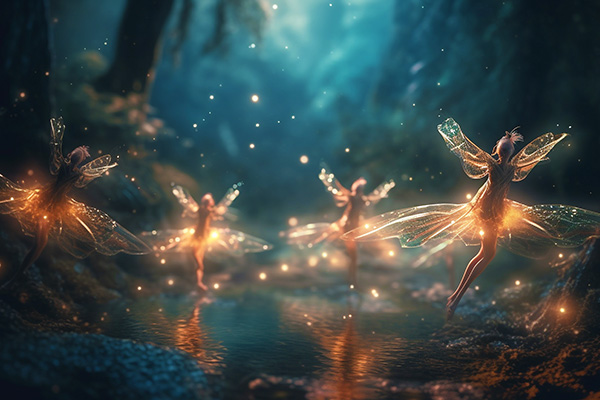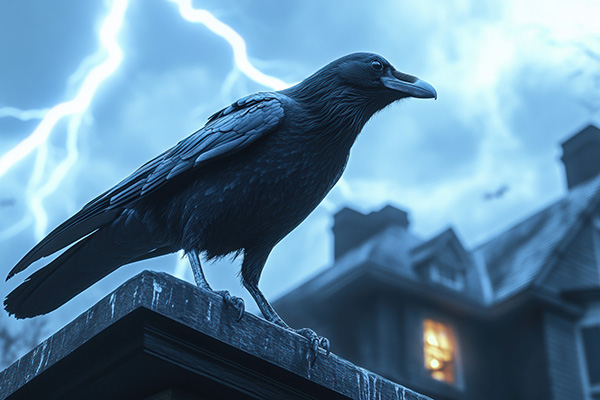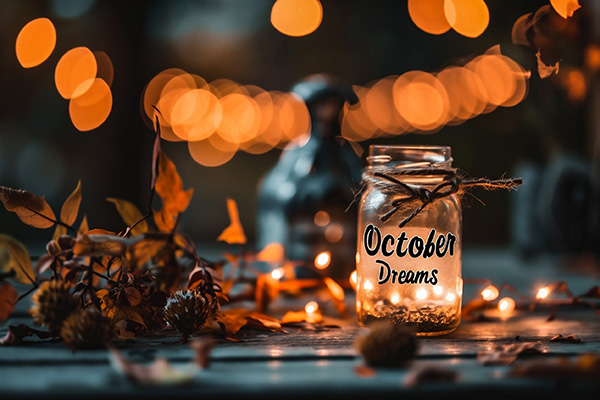neo-paganism
The History And Hidden Blessings Of Halloween

As a child, I remember getting excited about dressing up as a witch on Halloween and enjoying all the treats, like toffee apples and spooky cakes, that my mom used to make.
But one year, my father ruined the holiday for me when he explained his views on the significance of Halloween to me. I was just 10 years old, and it upset me.
Because of his religious beliefs, my father then forbade my siblings and me from celebrating Halloween. This made us feel excluded from our community as we watched other children dress up and enjoy themselves.
As an adult, I learned that it was not the event itself that was the issue, but rather the assumed F.E.A.R. behind it: False Evidence Appearing Real.
Remembering those times recently, I was prompted to take another look into the origin of this holiday tradition and what it truly stands for.
On 31st October each year, the Celtic pagan festival known as Samhain is celebrated, symbolizing the end of the harvest period and the start of the winter season, sometimes referred to as the “darker half” of the annual 12-month cycle.
Long before it became a night of costumes and candy, it was a sacred festival rooted in ancient spiritual tradition. The celebration we now know as Halloween traces its origins to Samhain (pronounced Sow-in), a Gaelic festival that marked the end of the harvest and the beginning of the dark half of the year.
The Timeless Magic Of Nature Spirits And Elementals
 As a youngster growing up in the UK, I loved visiting a neighbor, Mrs. O’Leary, whose lilting Irish voice still echoes in my mind. She spoke often of the “Good People” and acknowledged their presence in her home and garden. I recall her taking us outside to witness her making small offerings to these unseen little mystical beings.
As a youngster growing up in the UK, I loved visiting a neighbor, Mrs. O’Leary, whose lilting Irish voice still echoes in my mind. She spoke often of the “Good People” and acknowledged their presence in her home and garden. I recall her taking us outside to witness her making small offerings to these unseen little mystical beings.
Though it feels like a distant memory now, I can still recall seeing them, too. Perhaps they appeared to us because we truly believed, or perhaps because Mrs. O’Leary invited them to show themselves.
Whatever the reason, those moments left a lasting impression. To me, it felt like truly being “in my element,” fully connected to the hidden, magical forces of nature.
I vaguely recall a magical moment in Mrs. O’Leary’s garden when she pointed out to me a tiny, translucent little figure perched on a large moss-covered rock at the base of her prized old hawthorn tree. With delight, she described how this “little person” was waving at us and encouraged me to wave back. Standing there with awe and intrigue, I became aware of what seemed like hundreds of luminous sprites dancing in the glistening water below.
Despite all the cynicism of a technologically driven world, increasingly devoid of the many miracles and wonders of nature and the unseen realms, Mrs. O’Leary and the spirits of nature still remind me of the healing, transformative power that lies in reverence, stillness, and everyday magic.
What I Learned From Egyptian Goddess Hathor
 From the moment I first encountered her, Hathor, the ancient Egyptian goddess, she felt like a luminous companion on my spiritual path.
From the moment I first encountered her, Hathor, the ancient Egyptian goddess, she felt like a luminous companion on my spiritual path.
To me she isn’t just a myth or a symbol. She’s a living presence and a spiritual guide. She’s also a gentle yet powerful presence in my psychic and healing work. Her energy speaks to me on a deeply intuitive level.
My connection with Hathor began unexpectedly while reading a book on ancient Egypt. Suddenly, I felt a comforting warmth surround me. It was as if a long-lost friend had returned.
Then, I was guided to raise my hands, palms facing outward and I sensed her hands and palms facing mine. A glow of golden light flashed before me and I felt a warm sensation entering my palms and almost as though my hands were being supported and held, and all time was suspended.
In that timeless and powerful moment, Hathor’s nurturing love enveloped me, and her ancient wisdom whispered that time is merely a construct.
In the Infinite Light, there is no past or future, only this sacred now. In is in the present moment that healing and miracles unfold.
As a psychic, I find that Hathor naturally aligns with my practice. She is not just the goddess of love and beauty, though she radiates both. She embodies a vibrant, nurturing energy that opens emotional and spiritual channels.
Manifest Your Best Life With The Moon Phases
 Aligning with the moon’s phases is a powerful tool for manifestation, emotional balance, and energetic cleansing. Its ever-changing phases offer varying energy frequencies that can be used to improve many aspects of life.
Aligning with the moon’s phases is a powerful tool for manifestation, emotional balance, and energetic cleansing. Its ever-changing phases offer varying energy frequencies that can be used to improve many aspects of life.
Many ancient traditions revered the moon as a divine feminine force. Honored as a celestial goddess, her light was believed to guide humanity. Her journey across the sky mirrored the universal cycles of life, death, and rebirth that govern everything.
For the Greeks, the moon was Selene, the shining personification of lunar power, radiating purity and grace as she drove her chariot across the night sky. Selene was also linked to Artemis, the fierce goddess of the hunt and wild places. This connection embodied the moon’s untamed nature and its link to the wilderness.
Another important figure was Hecate, the formidable goddess of magic, witchcraft, and crossroads. She represented the moon’s mysterious and powerful aspects, guiding souls through the night. In Indian mythology, Chandra, the moon god, personified beauty and light, bringing calmness and tranquility to the night.
Throughout these ancient traditions, the moon was consistently viewed as a mysterious guide and careful keeper of sacred timing. Her rhythm influences everything from harvests to human emotions.
When we intentionally tune into this ancient, cosmic rhythm, we discover the profound, often subtle ways the continual ebb and flow of lunar energy directly influences our inner being and daily life. Our emotions, energy levels, and thoughts are closely tied to the moon’s gravitational pull and energy shifts.
Ready For Your Spring Spiritual Renewal?
 Today marks the Spring Equinox and the first day of spring in the Northern Hemisphere. Known also as the Vernal Equinox, it is an astronomical event that marks one of the two times of the year when day and night are nearly equal in length. It usually occurs around March 20th or 21st in the Northern Hemisphere.
Today marks the Spring Equinox and the first day of spring in the Northern Hemisphere. Known also as the Vernal Equinox, it is an astronomical event that marks one of the two times of the year when day and night are nearly equal in length. It usually occurs around March 20th or 21st in the Northern Hemisphere.
During the equinox, the sun crosses the celestial equator and moves north. Many cultures and traditions celebrate it as a time of balance, renewal, and growth. As nature shifts into balance, we are invited to do the same — to clear away what no longer serves us and move into a season of light, action, and new beginnings.
Spring is a new beginning. A new sun rising. The dawn in the wheel of the year. At this time of year our minds are bright and alive with new ideas. Many of us feel inspired and excited to try new things. Life awakens in the warm sunlight and our spirits feel ready for a new beginning.
One of the longstanding customs associated with this time of year is the tradition of “spring cleaning.” Across cultures and generations, people have used this time of year to refresh their homes, clear out accumulated clutter, and invite new energy into their lives.
But spring cleaning is more than just cleaning up our physical space — it is a sacred ritual of renewal, release, and transformation. As the earth awakens from hibernation, we too are called to clear out the old and make room for new energy. From a spiritual perspective, this process is an opportunity to realign ourselves with higher frequencies, release stagnant energy, and invite clarity into our lives.

